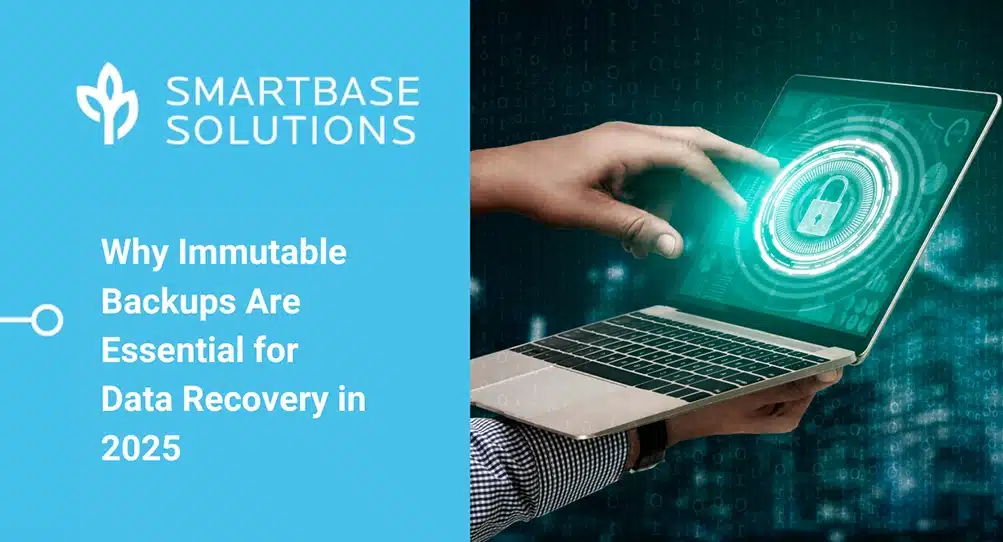For many organizations—especially in industries like healthcare, finance, and government—a hybrid cloud environment offers the best of both worlds: the flexibility of public cloud services with the security and control of private infrastructure. However, hybrid cloud setups also come with one major challenge: more complexity = more opportunity for error.
And when errors happen in a hybrid cloud environment, they often lead to costly, damaging data breaches.
At SmartBase Solutions, we’ve helped clients navigate secure cloud transformation for over 20 years. Here’s what you need to know to avoid data breaches and keep your hybrid cloud secure, compliant, and under control.
What is a Hybrid Cloud Environment?
A hybrid cloud is a mix of on-premises infrastructure, private cloud, and public cloud services (like AWS or Microsoft Azure). These environments work together to share data and workloads, often through APIs, virtual machines, or container orchestration tools.
Hybrid setups are increasingly common in regulated industries because they:
- Allow for incremental modernization
- Support legacy systems while adding cloud-native services
- Help organizations control sensitive data while scaling with demand
But this flexibility also introduces new attack surfaces, especially when integrations, policies, or configurations aren’t handled securely.
Why Data Breaches Happen in Hybrid Cloud Setups
Data breaches often stem from misconfigurations, inconsistent policies, or gaps between environments. Common vulnerabilities include:
- Misconfigured cloud storage buckets
- Inadequate access controls across platforms
- Unpatched systems in on-prem or legacy environments
- Poor visibility or monitoring between cloud and on-prem infrastructure
- Lack of encryption or inconsistent backup strategies
These risks aren’t hypothetical. Organizations have suffered millions in damages, fines, and reputational loss due to breaches stemming from hybrid cloud weaknesses.
8 Proven Ways to Avoid Data Breaches in Hybrid Cloud Environments
- Use a Zero Trust Security Model
In a hybrid setup, don’t assume anything is secure by default. Zero trust means every device, user, and system must continuously verify its identity and permissions—no matter where it lives.
- Unify Your Access Controls
Multiple clouds and environments often mean multiple access points. Use a centralized identity and access management (IAM) system with multi-factor authentication to ensure consistency.
At SmartBase, we help clients build role-based access policies that extend across cloud, on-prem, and edge devices, reducing the risk of unauthorized access.
- Encrypt Data in Transit and at Rest
Data moving between clouds or across APIs is especially vulnerable. Use end-to-end encryption for everything, and ensure encryption keys are stored securely and managed properly.
- Harden Every Endpoint and Entry Point
Whether it’s a legacy server, mobile device, or third-party API, every entry point should be monitored, secured, and regularly updated.
We recommend using advanced endpoint detection and response (EDR) tools as part of your hybrid cloud strategy.
- Automate Backups and Disaster Recovery
Hybrid environments can make backup complexity harder to manage—but no less important. Implement automated, encrypted backups with offsite recovery options, especially for your most critical workloads.
- Monitor in Real Time Across All Environments
Don’t rely on segmented visibility. Use cloud-native SIEM (Security Information and Event Management) tools or partner with a provider that offers real-time monitoring and alerts across every layer.
At SmartBase, our clients benefit from unified dashboards that surface threats before they escalate—regardless of where the data lives.
- Vet and Monitor Third-Party Tools
Most hybrid cloud environments integrate with third-party services for efficiency. But every vendor adds risk. Make sure you conduct security reviews and hold partners to the same standards you apply internally.
- Choose Providers That Understand Compliance
Whether it’s HIPAA, HITRUST, CMMC, or PCI-DSS, your cloud environment needs to support—and prove—compliance. Not every public cloud provider is built for regulated industries.
SmartBase’s HITRUST-certified private cloud infrastructure is designed to help clients navigate hybrid cloud deployments while staying audit-ready.
Hybrid Cloud Security Requires More Than a Firewall
Securing your hybrid cloud isn’t about plugging a single hole—it’s about taking a strategic, layered approach that combines infrastructure, policy, monitoring, and proactive response.
Most importantly, your cloud and infrastructure partners need to speak the same language of compliance, visibility, and accountability—because if something slips through the cracks, it’s your organization that pays the price.
Secure Your Hybrid Cloud with SmartBase Solutions
Hybrid cloud isn’t a trend—it’s the future of IT infrastructure. But without a plan for visibility, control, and compliance, it can become your organization’s biggest liability.
At SmartBase Solutions, we help high-security organizations architect, monitor, and maintain hybrid cloud environments built for resilience—not risk.
Let’s talk about how to secure yours. Contact us today to schedule a discovery call.






